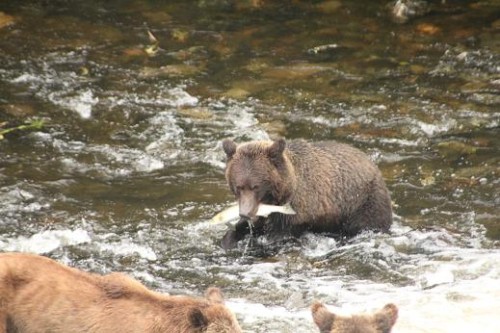
This could be this two-year-old grizzly bear cub’s first salmon. It was the first day that we noticed it had much interest in fishing. Prior to this it relied on it’s mother to provide the food. Time to become an active member of the family and obtain it’s own meals. There is a good chance that this is the last “fishing season” with mother and therefore the last chance to pick up the necessary techniques to survive on it’s own. Females will rear their cubs for 2-3 years. When a female grizzly bear leaves her mother, they often set up their home range in Knight Inlet quite close to their mother’s home range. Males will typically range further, but may also remain close by.
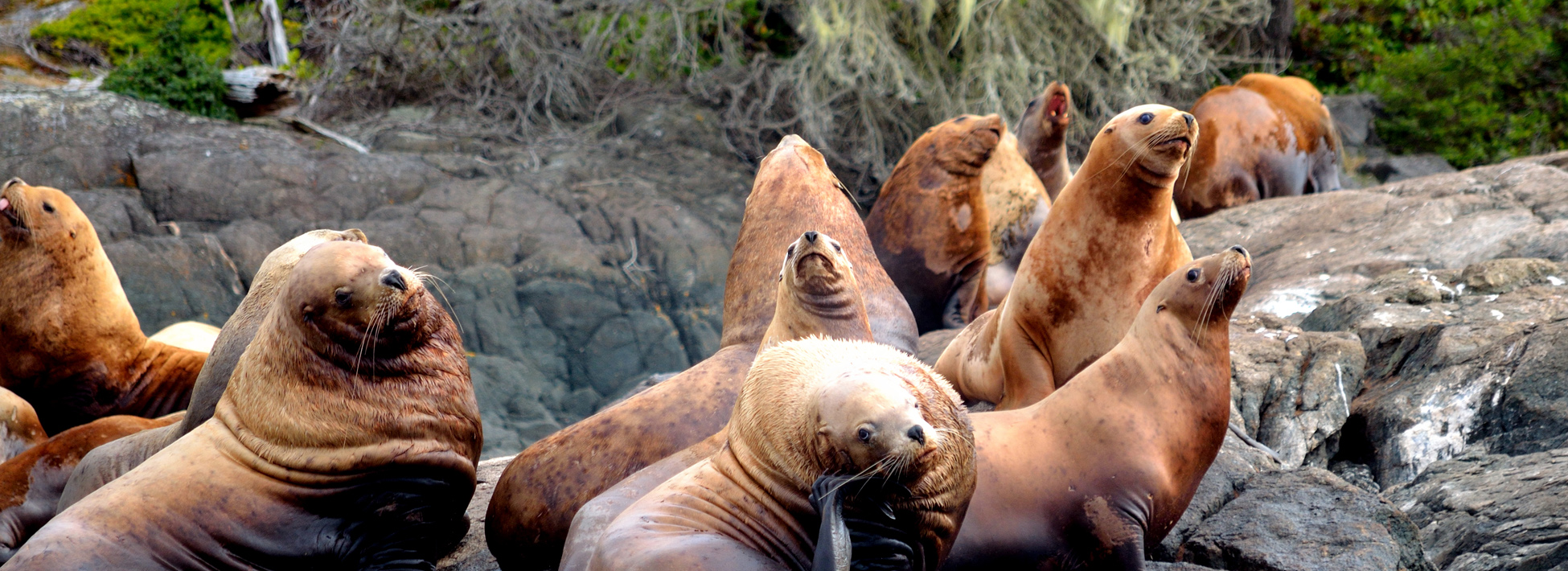



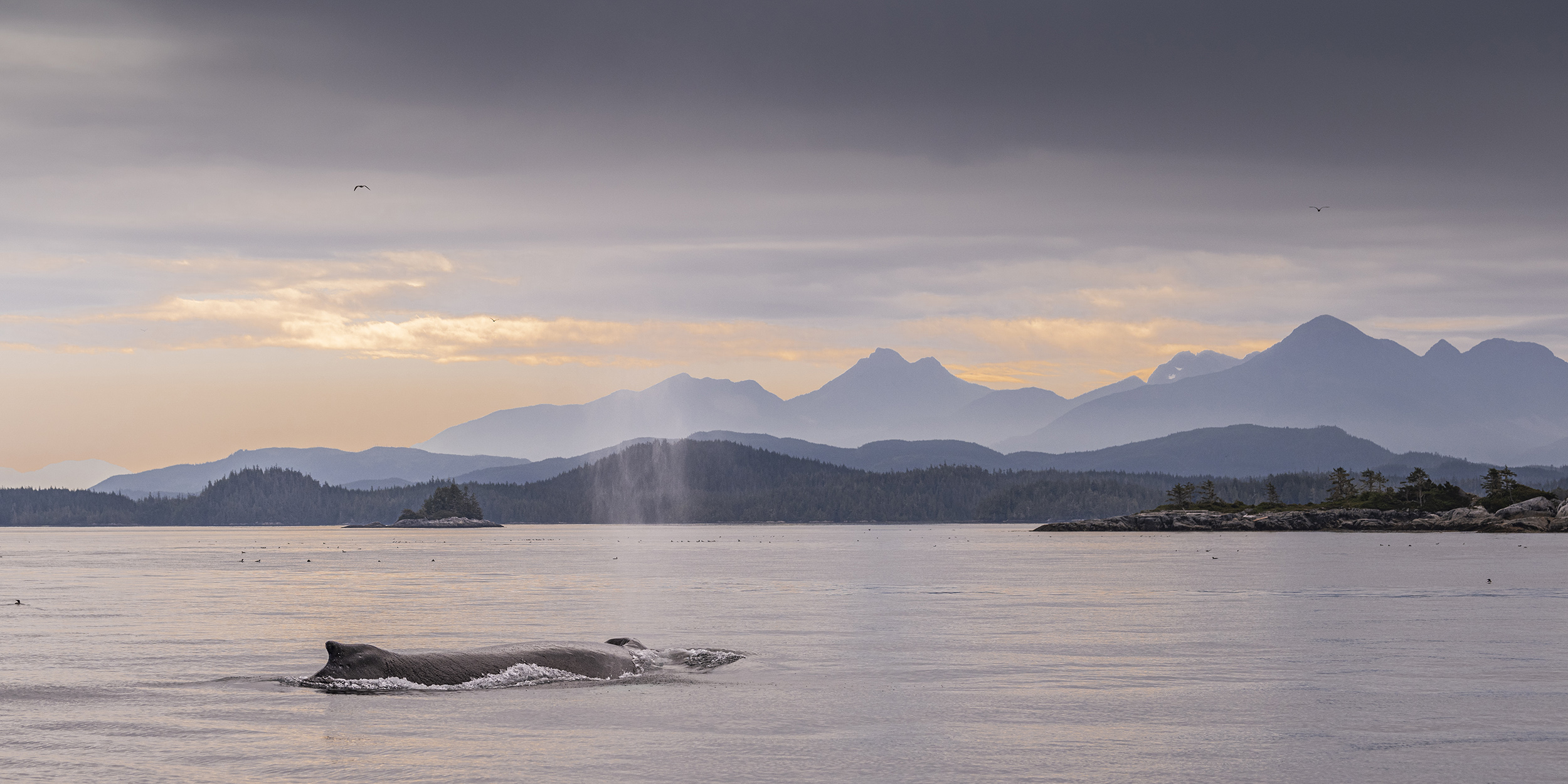

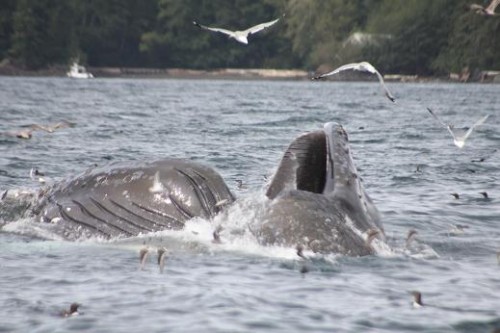
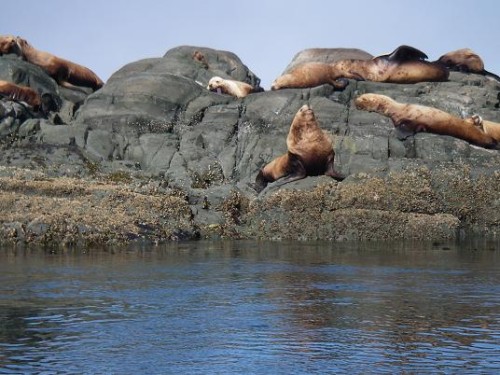
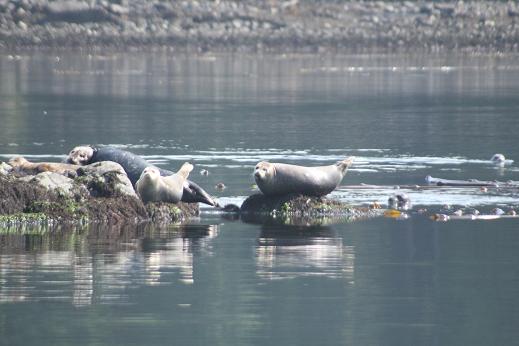

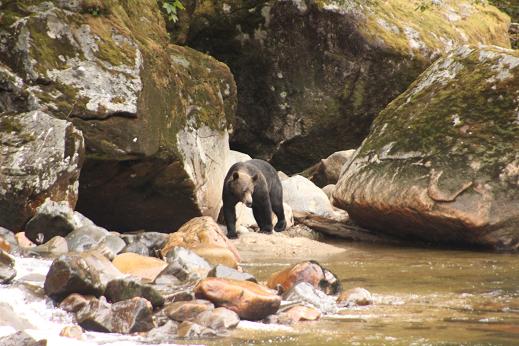

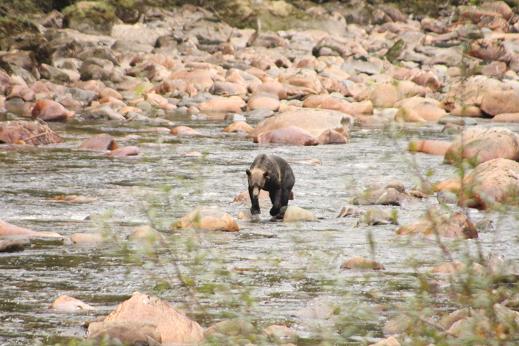
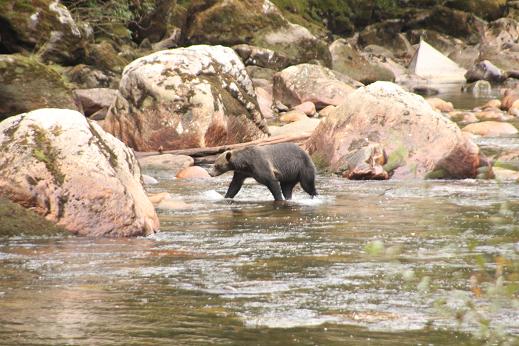
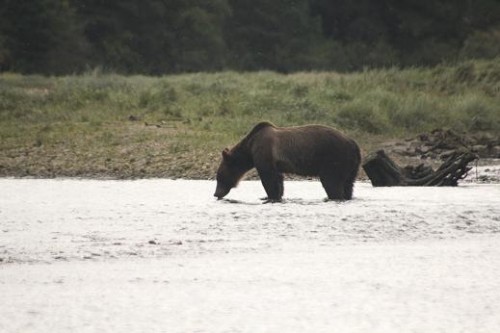 On Grizzly Bear Lodge’s wildlife tours during the hot days of July and August we frequently see grizzly bears in the water. The water in Knight Inlet’s Glendale estuary is a mixture of salt and fresh water which the grizzly bears often drink when the tide is going out. On a rising tide the surface water contains more salt so less drinking. It is better to have the grizzlies wading and swimming and cooling off in the water than moving into the shade away from our viewing.
On Grizzly Bear Lodge’s wildlife tours during the hot days of July and August we frequently see grizzly bears in the water. The water in Knight Inlet’s Glendale estuary is a mixture of salt and fresh water which the grizzly bears often drink when the tide is going out. On a rising tide the surface water contains more salt so less drinking. It is better to have the grizzlies wading and swimming and cooling off in the water than moving into the shade away from our viewing.
